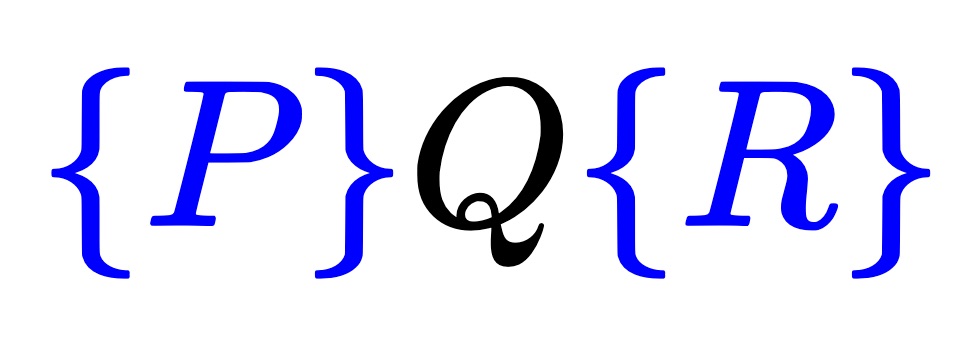Unit 4.5 Deriving algorithms with the FLAME notation
Much like we filled out a worksheet before, given a loop invariant, we can do the same with this new notation [1]. If we choose Invariant 5, then it is relatively straight forward to fill in Steps 1-5:
-
Step 1a: The precondition is \(T \) since many assumptions about \(a \) and \(\chi \) are implicit in the choice of a lowercase Roman letter for the vector and a lowercase Greek letter for \(\chi \text{.}\)
Step 1b: The postcondition is \(\psi = p( a, \chi ) \text{.}\)
-
Step 2: We fill in the Invariant 5
\begin{equation*} \psi = \pi\left(a_B, \chi \right) \end{equation*}in the appropriate places.
-
Step 3: The loop guard can be termined from the fact that
\begin{equation*} \psi = \pi\left(a_B, \chi \right) ~\wedge \neg( G ) \end{equation*}must imply the postcondition
\begin{equation*} \psi = \pi\left(a, \chi \right). \end{equation*} -
Step 4: The initialization must put the variables in a state where the loop invariant is true, which is accomplished by
\begin{equation*} \begin{array}[b]{@{}l} \psi:=0 \\ a \rightarrow \left( \begin{array}{c} a_T \\ \hline a_B \end{array} \right), \end{array} \end{equation*}where \(a_B \) is empty.
Step 5: At each step, we expose the last entry of \(a_T \text{,}\) the top part of \(a \text{,}\) compute with it, and then move it to \(a_B \text{,}\) the bottom part of \(a \text{.}\)
Next, we notice that Steps 5a and 5b are merely indexing steps in which various parts of the vector are relabeled.
-
Step 6: The contents of \(\phi \) in terms of these exposed parts, is given by the loop invariant
\begin{equation*} \psi = \pi\left(a_B, \chi \right) \end{equation*}with \(a_2 \) substituted for \(a_B \text{:}\)
\begin{equation*} \psi = \pi\left(a_B, \chi \right). \end{equation*} -
Step 7: At the bottom of the loop, the variables must again be in a state where
\begin{equation*} \psi = \pi\left(a_B, \chi \right). \end{equation*}However, by then \(a_B \) has been expanded to add \(\alpha_1 \) as its first element. Thus, before \(a_B \) is so redefined, it must be that
\begin{equation*} \psi = p \left( \left( \begin{array}{c} \alpha_1 \\ a_2 \end{array} \right), \chi \right), \end{equation*}which from 4.2 we saw equals
\begin{equation*} \psi := \alpha_1 + p( a_2, \chi ) \times \chi. \end{equation*}
This brings fills the worksheet further:
Finally, the state of variable \(\psi \) must be updatde from that in Step 6:
to that in Step 7:
This allows us to complete the worksheet:
Finally, we can remove all the annotations, leave us with the algoriithm:
The important observation is that this notation hides the details of indexing, both in the algorithm itself and in the annotations.
